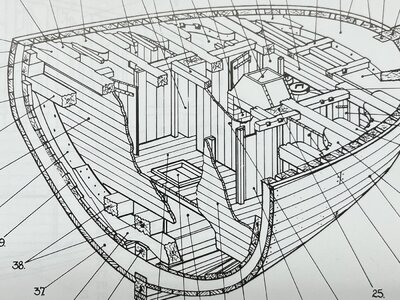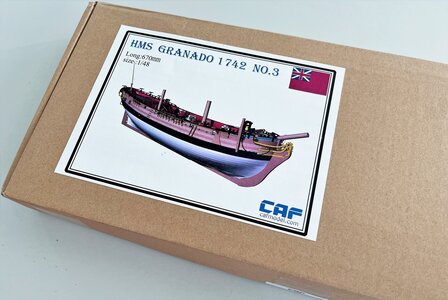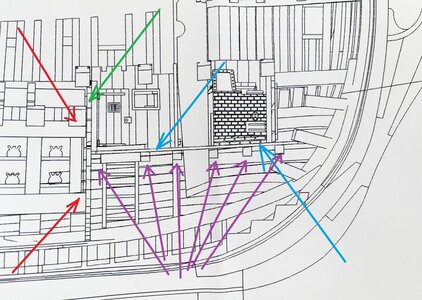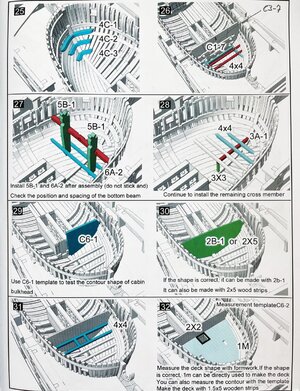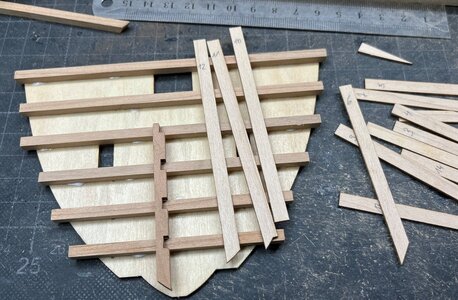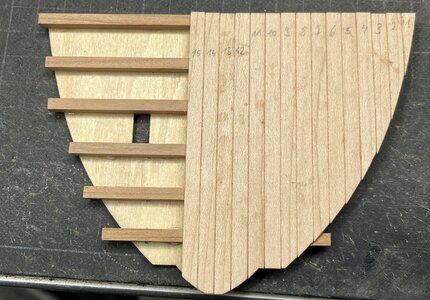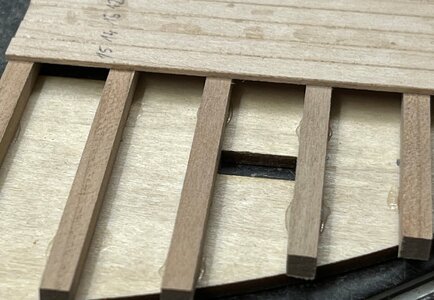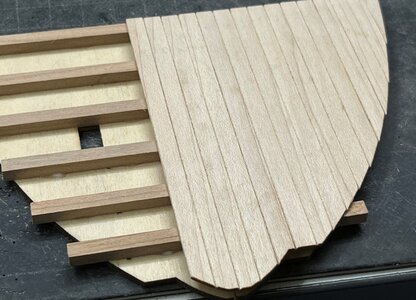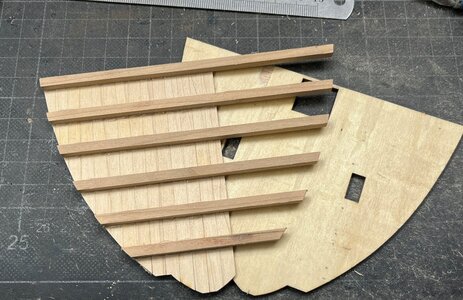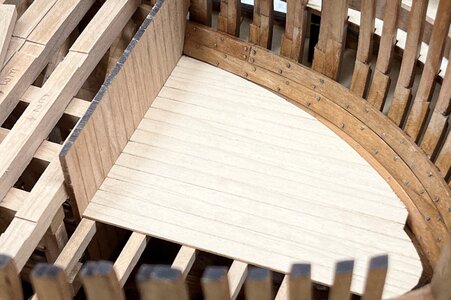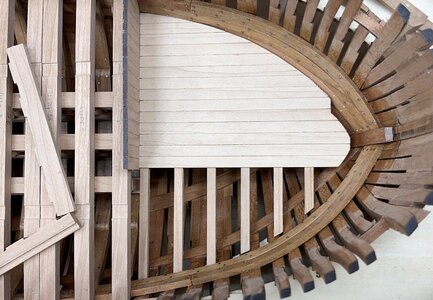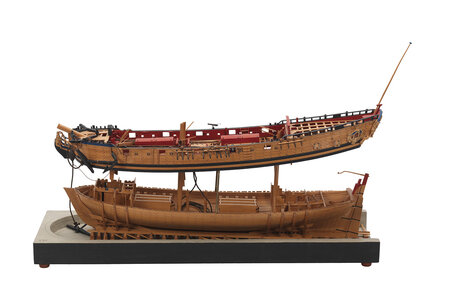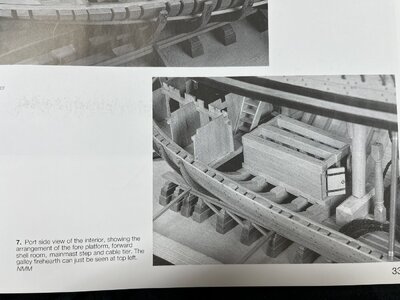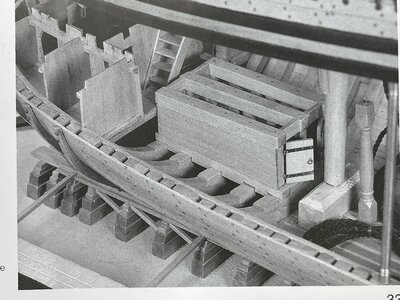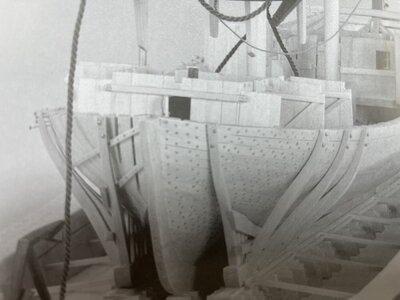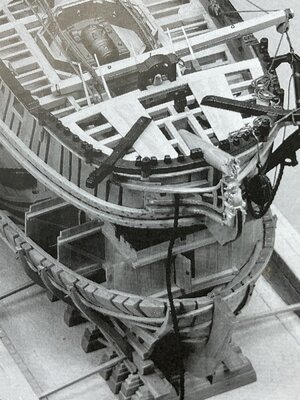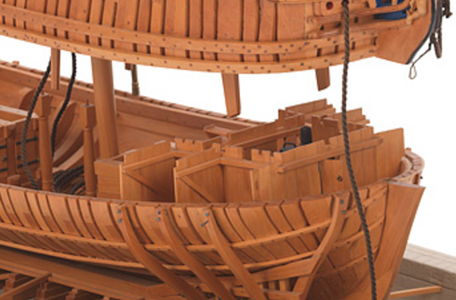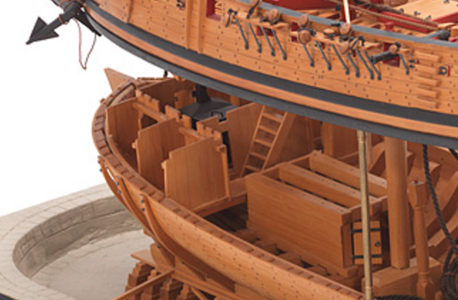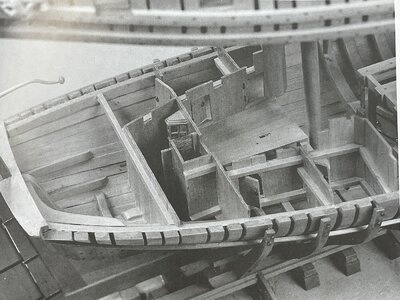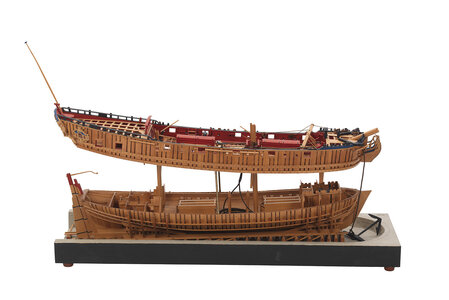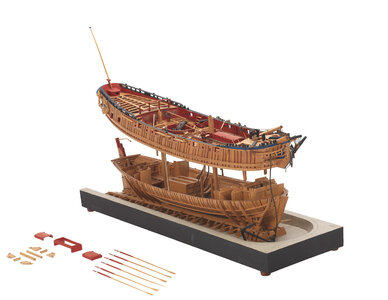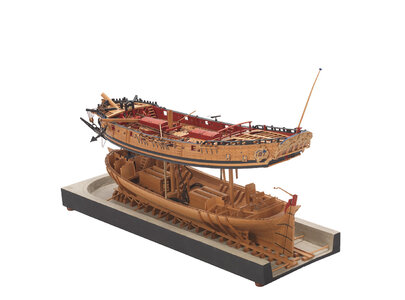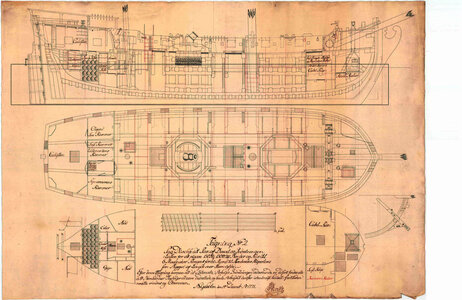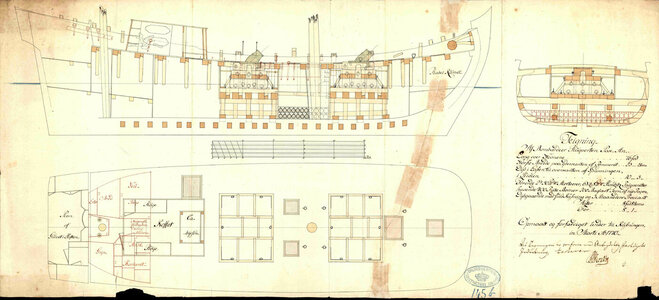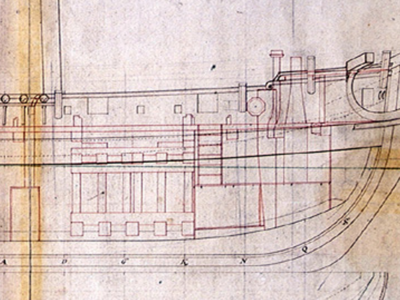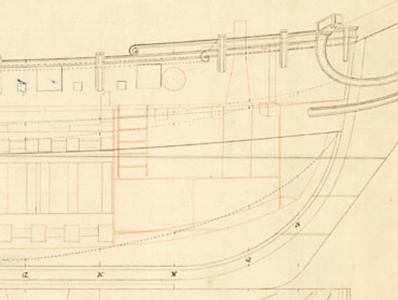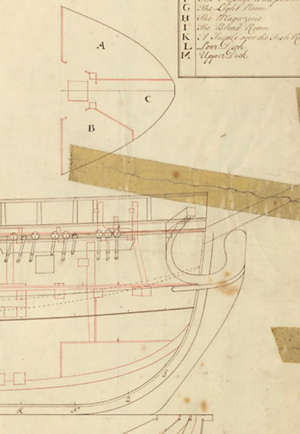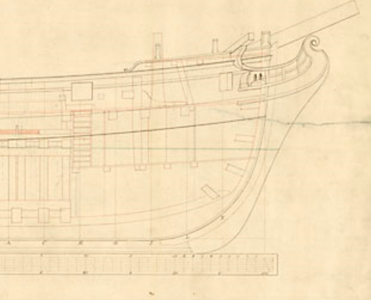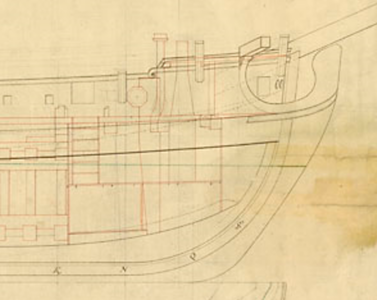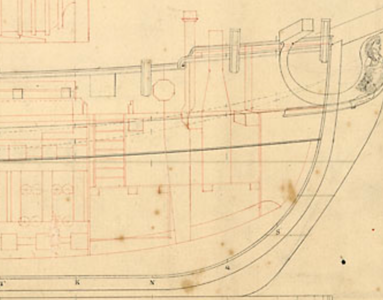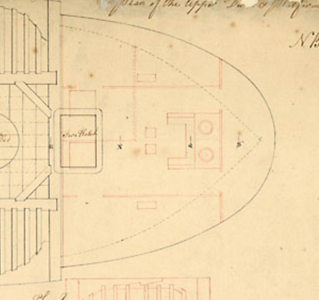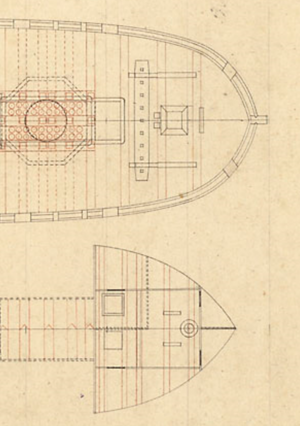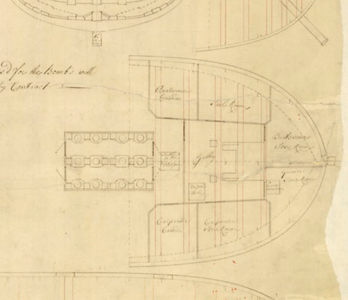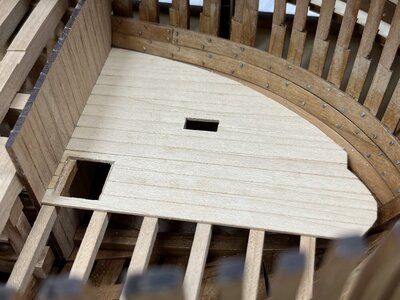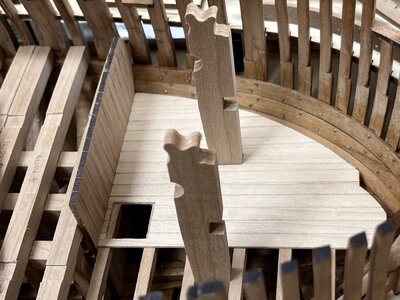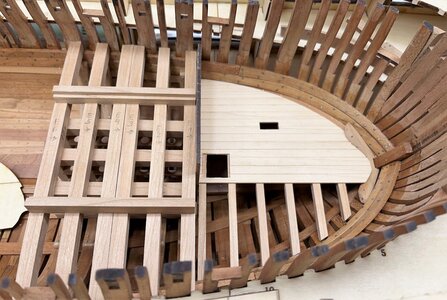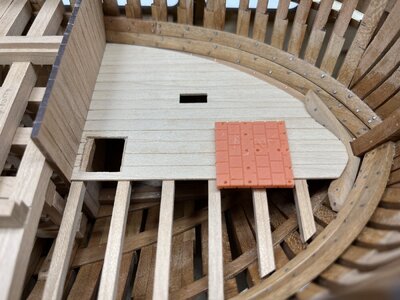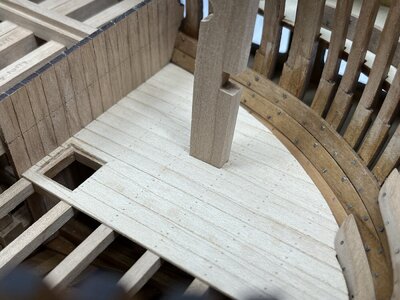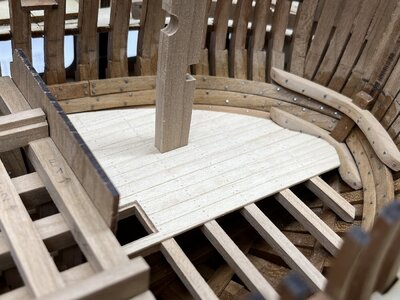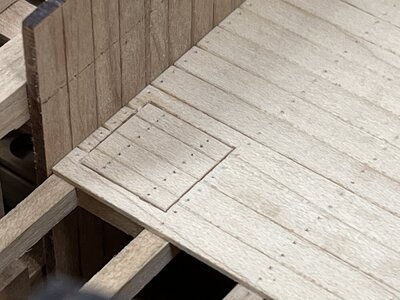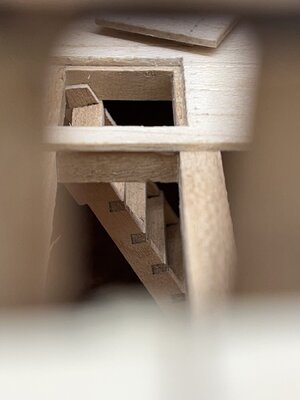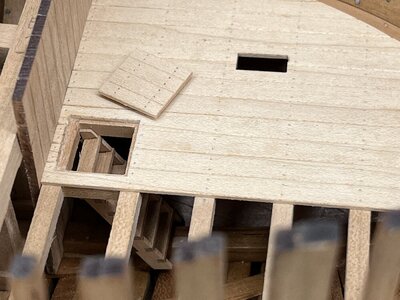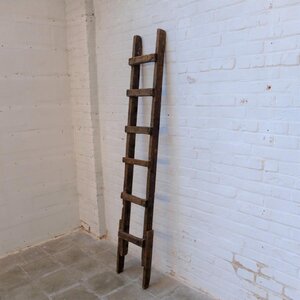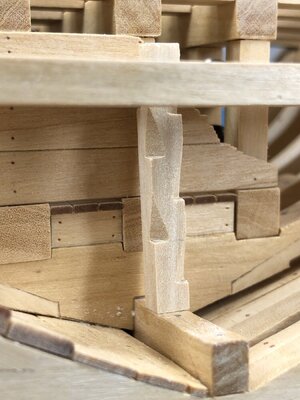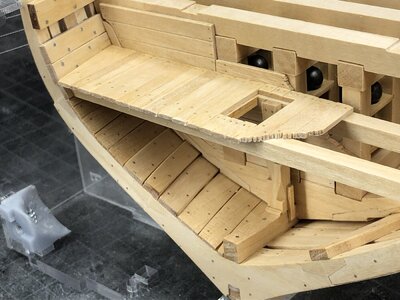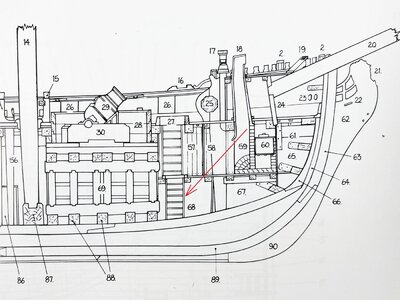Hi Uwe,
why do you use vertical timber at the bulkhead? Have a look in the build log of
Giampy65. He shows the correct way how this was installed.
There is no connection between the structure under the bombs and the bulkhead, because thestructur was removable.
Hallo Christian,
I have my doubts, that this structure of the bulkhead was removable like you describe. Or maybe better: there is for me no proof that it was removable.
But before I try to formulate arguments in this or that direction, I have to state, that my decision, of how I will make the bulkhead, especially in this are, is still open. Until now everything is still only dry fitted, so still possible to change. In moment I neede some counterwall, that the deck segment will have a basis and a limit for movement.
In principle:
1) The Granado was a bomb vessel and not like the model made by Giampy a fighting vessel. Such bomb vessels, were usually never in a direct fight with some other ships. So the risk of splintering caused by a cannon ball was extremely low, and because of this the walls were (maybe) not necessary to remove during action.
I am not aware about one biomb vessel, which was lost during an action, they were all paid off etc.
2) In principle removabel interior walls were necessary only above the waterline, but not under the waterline.
3) If removable, I can make such wall segments with vertical or with horizontal boards, so I can not see there a must for vertical or horizontal. But maybe you know a source, wehre this is defined - this would be interesting to know
Let us take a closer look to the drawings in the anatomy book of the Granado
Here no wall is shown between the mortar bed and the room 68 which is the so called "coal hole" - towards 67 "void space" is also a small wall shown (void space means that this area was closed and not used in any way)
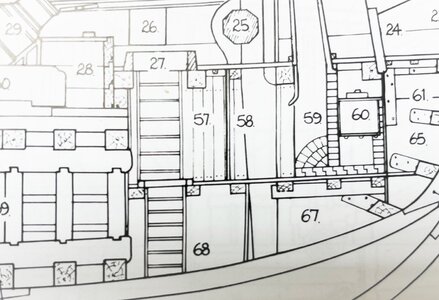
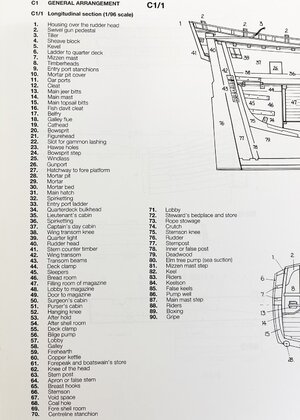
BTW: I have my doubts, that the entrance to the Cole hole was a ladder - in my interpretation of my section model of the Granado I made already a monkey ladder - and you recognize that here I made horizontal cladding, but no bulkhead
The next step was the final adjustments and fine-tuning of the mortar box beams on which later on the heavy mortar will be based also the lower row of the deck clamps have to be prepared - with this also a check of the heights of the mortar bed beams is possible the bolting was once more...
shipsofscale.com
In this view Goodwin is showing a bulkhead "30" with horizontal boards, but defintely not removable, because this bulkhead is starting already in the hold.
All other walls of the different rooms are shown with horizontal boards
Remark here:
31 is showing the "cole hole" - remember this room in the hold which is connected with the deck via a ladder. Here the wall of the cole hole is directly appr. on the side of the middle lower beam of the mortar bed => if this would be correct, than the coal hole would be only 50cm wide, which can not be - so I am pretty sure, that this detail is wrong
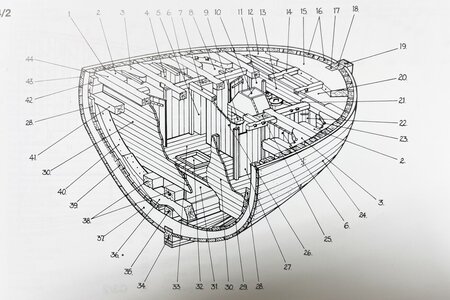
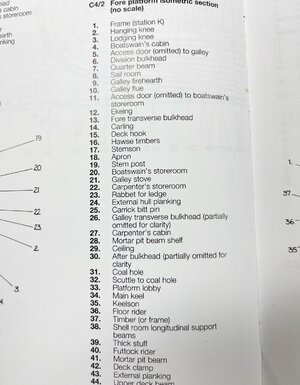
Here the Fore platform is shown with 17 the "After bulkhead". Visible is with the deck planking nailing, that the planks seems to end before the bulkhead, but the other walls are standing on top of the deck planking (removable or not removable).
So I interpret this, that the bulkhead is coming up from the hold up => and therefore not removable
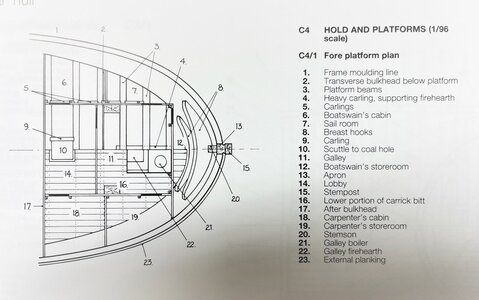
Unfortunately in the book there is no top view of the hold (under the fore platform) where the walls of this cole hole should be be shown
In the following post(s) I would like to show you some more information about the research I made until now about this subject...... to be continued ....

